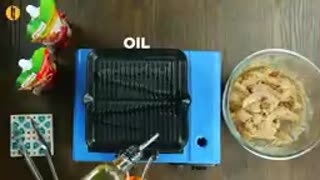Premium Only Content

Heat Exchanger Basics
A heat exchanger is a device designed to transfer heat between two or more fluids (liquid or gas) without mixing them. Heat exchangers are widely used in industries like HVAC, power generation, chemical processing, and automotive systems. Here's a breakdown of the basics:
1. Purpose of Heat Exchangers
Heat Recovery: Reuse waste heat to improve energy efficiency.
Cooling: Reduce the temperature of a fluid.
Heating: Increase the temperature of a fluid.
Phase Change: Support processes like condensation or evaporation (e.g., in refrigeration).
2. Principles of Heat Transfer
Heat exchangers operate based on three heat transfer mechanisms:
Conduction: Heat transfer through solid walls separating the fluids.
Convection: Heat transfer between the fluid and the wall.
Radiation: Negligible in most standard heat exchangers.
3. Types of Heat Exchangers
A. Based on Flow Arrangement
Parallel Flow:
Fluids flow in the same direction.
Less efficient for large temperature differences.
Counterflow:
Fluids flow in opposite directions.
Most efficient, as it allows greater heat transfer.
Crossflow:
Fluids flow perpendicular to each other.
Common in air-to-liquid heat exchangers.
B. Based on Construction
Shell-and-Tube Heat Exchangers:
One fluid flows through tubes, and another flows around the tubes in a shell.
Common in industrial applications.
Plate Heat Exchangers:
Thin plates with narrow gaps between them allow efficient heat transfer.
Compact and highly efficient, often used in HVAC.
Air-Cooled Heat Exchangers:
Use air as the cooling medium.
Common in power plants and automotive radiators.
Finned Tube Heat Exchangers:
Fins increase the surface area for heat transfer.
Used in systems requiring compact designs.
Double Pipe Heat Exchangers:
A simpler design with one fluid flowing in an inner pipe and another in the outer pipe.
4. Key Components
Heat Transfer Surface: The area where heat exchange occurs.
Inlets and Outlets: Entry and exit points for fluids.
Baffles (in shell-and-tube): Guide fluid flow to enhance heat transfer.
Gaskets (in plate heat exchangers): Seal between plates to prevent leakage.
5. Efficiency Factors
Surface Area: Larger surfaces allow more heat transfer.
Temperature Difference: Greater temperature differences between fluids enhance heat transfer.
Material: Conductive materials like copper or aluminum improve efficiency.
-
 1:35
1:35
HSESafetyInformation
8 months agoMutton Chops two ways- baked & grilled Recipe by Food Fusion (Eid Recipe)
73 -
 LIVE
LIVE
GritsGG
5 hours agoWorld Record Win Streak Attempt! #1 Most Wins 3880+!
50 watching -
 LIVE
LIVE
The Rabble Wrangler
15 hours agoBattlefield with The Best in the West
60 watching -
 13:56
13:56
Cash Jordan
2 hours ago"OPEN BORDERS" Mob BATTERS Portland Jail… 'COMBAT' Marines DEFY Judge, BREAK BONES
4.92K7 -
 16:44
16:44
Russell Brand
3 hours agoAmerica’s Hidden Royalty
29.4K26 -
 LIVE
LIVE
LumpyPotatoX2
3 hours agoLightyear Frontier: Gameplay Showcase - Sponsored Stream
36 watching -
 LIVE
LIVE
ReAnimateHer
8 hours ago $0.13 earnedSurviving the Undead in Cold War Zombies
25 watching -
 1:44:25
1:44:25
Redacted News
2 hours agoElection Day Disaster for Trump? Europe preps for WAR against Russia, Israel's PR failure | Redacted
85.5K84 -
 LIVE
LIVE
Wayne Allyn Root | WAR Zone
8 hours agoWatch LIVE: The War Zone Podcast with Wayne Allyn Root
63 watching -
 33:39
33:39
LibertyRoundTable
4 hours agoWarhawk Down: Dick Cheney’s Legacy & the Rise of Citizen Journalism | LRT Radio 11/4/25”
2.91K1